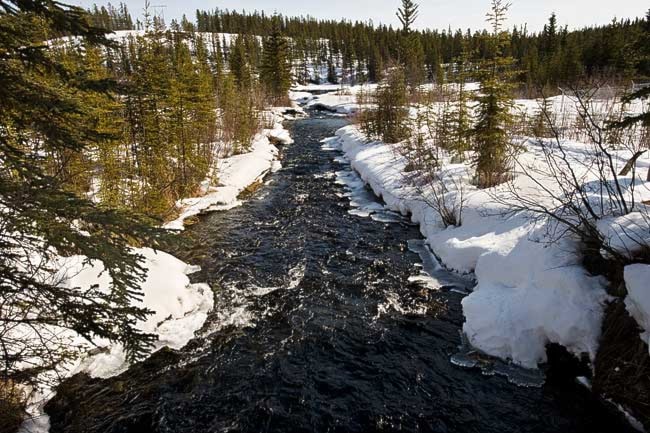Frequented by moose, birds, skiers and, more recently, encroaching development—McIntyre Creek is the perfect place for an official park, say proponents.
“When we’re looking at paying $16 a gallon for gas, it’s going to be a long ways going out to places like Kusawa to enjoy what we can enjoy in our backyard,” said Dorothy Bradley, founder of Friends of McIntyre Creek.
Both Edmonton and Calgary have large, centralized parklands—although theirs have come at a much higher price, said Bradley.
The two Alberta cities used to allow near-unrestricted riverside development. Now, desperate for parkland, the municipalities are buying up former residential lots and grooming them back into parkland.
The Whitehorse area to be set aside is roughly equal to the area bounded by Yukon College, Copper Ridge and the Robert Campbell bridge.
While it is still “early to say,” the park could be up to 30 square kilometres, said John Carney, a board member with the Yukon Fish and Game Association.
The park would encircle the Yukon Electrical Co. Ltd. power station and the landfill. About one-third of the proposed park is already set aside under a lease to the Whitehorse Cross Country Ski Club.
There’s no “push” to develop the area, but there are plans, said Bradley.
McIntyre Creek is almost “pinched shut” by Raven’s Ridge Road and Fish Lake Road, said Yukon Conservation Society executive director Karen Baltgailis in a presentation given in October, 2007.
The Raven’s Ridge housing development access road was built almost adjacent to the creek, without any treed buffer, forcing nearby bird populations to go “way down,” said Bradley.
The Whistle Bend subdivision has plans for a road running straight to the Kopper King—subsequently passing through the creek wetlands.
“Why a road through there?” said Bradley. “It looks very suspicious to me.”
It’s time that legislators started appreciating the “economic” value of McIntyre Creek, wrote Liberal MLA Don Inverarity in a release issued last Wednesday.
The creek is a critical base for ecotourism activities, such as hiking, fishing, orienteering, skiing and birdwatching, he wrote.
Rock climbers, the Yukon Orienteering Association, the Klondike Snowmobile Association and the Yukon Fish and Game Association have all tacked their support onto the plan.
The Kwanlin Dun First Nation Elders Council unanimously passed a resolution to protect the creek.
Environment Minister Elaine Taylor supported the park, but maintained awarding park status was a municipal responsibility.
“It’s before the city of Whitehorse,” she told the legislature on Tuesday.
“All we know is what’s been in the papers; we haven’t been approached directly,” said city manager Dennis Shewfelt.
From a land-transfer standpoint, city management of the park would pose a number of legal obstacles, said Shewfelt.
Most of the proposed area is zoned as territorial greenspace: land that would need to be transferred to municipal control.
Staffing and monitoring the park would be well beyond the realm of city resources, said Shewfelt.
The creek is one of only two east/west wildlife corridors through the city. Each year, moose, coyotes, beaver, otter, mink and muskrat migrate along McIntyre Creek.
A salmon spawning stream, it is also home to rainbow trout, grayling and many bird species.
During the winter, McIntyre Marsh hosts some of the Yukon’s only open water—making it a hot spot for birds.
“Right now, this is the place to go for spring birds,” said Bruce Bennett, the wildlife viewing biologist with Environment Yukon.
Contact Tristin Hopper at
tristinh@yukon-news.com
